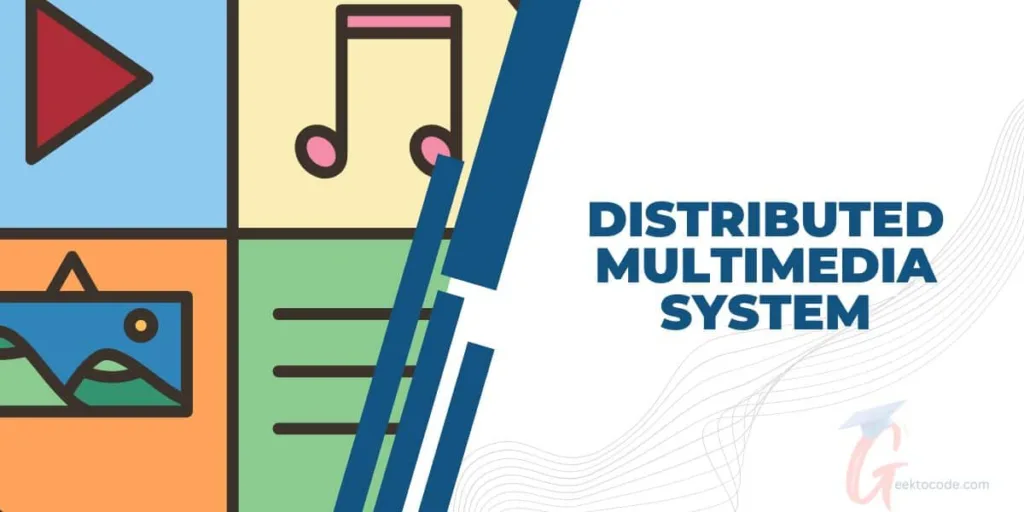Distributed multimedia system is designed for the distribution of multimedia content over networks and include multimedia databases, proxy servers, information servers, and clients.

Real-time streams of data are continuously produced and consumed by multimedia applications. The timely processing and delivery of each individual data element is crucial because they contain significant amounts of audio, video, and other time-based data elements. The prerequisite for a distributed system is data transmission. Therefore, how to transfer multimedia data in the required quality is the main concern in distributed multimedia systems.
Discrete data transmission is the main focus of the distributed system standards and platforms currently in use, including RM-ODP, CORBA, and DCE. Multimedia computing has many new requirements that are imposed on distributed systems.
First and foremost, the distributed multimedia system must be able to accommodate continuous media formats like audio, video, and animation. Distributed systems require continuous data transfers over relatively long times in order to accommodate the introduction of such continuous media data. Playing a video from a remote website, for instance, implies that the timeliness of the media transmission must be preserved throughout the presentation of continuous media.
The requirement for sophisticated quality of service (QoS) management is the second prerequisite for distributed multimedia applications. Most traditional computing environments either respond to or ignore requests for a specific service. However, there are more contents in multimedia systems that fall into the static QoS management and dynamic QoS management categories.
The architecture is presented at an abstraction level appropriate for the paper’s subject matter. An information server, a wide area network, and a multimedia client on the user’s site make up a distributed multimedia system’s three fundamental parts. The user interface, also known as the multimedia client, handles matters pertaining to the presentation and manipulation of multimedia objects as well as user interaction.
The user and server can communicate with each other through the network.
In addition to managing multimedia databases, the server is also in charge of creating all-purpose multimedia objects for the user. The process of composing the object involves carefully integrating and synchronizing multimedia data for manipulation, display, and transport. As shown below, the system typically consists of numerous users, servers, and networks.
A DMS’s main attributes are as follows:
Scalability:
A large number of users and multimedia content can be handled by DMS. It is simple to scale it up or down as the system’s requirements change.
Reliability:
Even in the case of network failures, DMS is built to deliver multimedia content consistently. It guarantees that users can access multimedia content at all times.
Ease of use:
The user-friendly design of DMS makes it simple for users to access and manage multimedia content.
Security:
DMS offers secure access to multimedia content, making sure that only authorized users can access it.
Cost-effectiveness:
DMS offers a cost-effective method for distributing multimedia content, cutting down on the expenses related to conventional methods.
The following elements are frequently found in a DMS’s architecture:
Content Management System (CMS):
Multimedia content management and organization are the responsibility of the CMS. Users can upload, store, and manage multimedia content using this tool.
Content Delivery Network (CDN):
The delivery of multimedia content to users is the responsibility of the CDN. Even in the case of network failures, it guarantees prompt and effective delivery of multimedia content.
User Interface (UI):
The UI offers users a simple way to access and control multimedia content.
What is Infrastructure Security in Cloud Computing?
Security:
A DMS’s security feature makes sure that only authorized users can access multimedia content.
For the purpose of distributing multimedia content, distributed multimedia systems offer a scalable, dependable, and affordable solution. DMS is the perfect solution for organizations that need efficient and effective management of multimedia content due to its simplicity of use, scalability, and security features.



